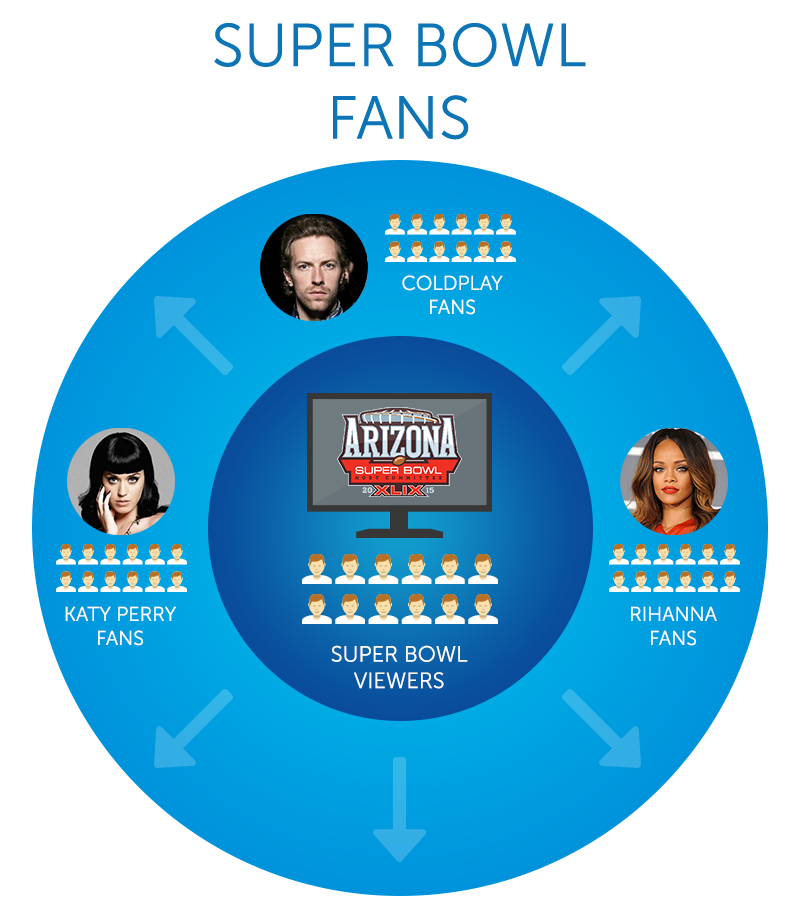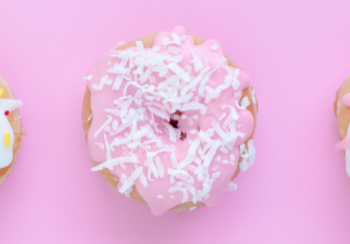Super Bowl Halftime Show: Is It Worth the Pay to Play?
The NFL season kicked off last Thursday, so in the eyes of many, fall has officially arrived. Football is arguably bigger than it has ever been – last season, the most watched program in the United States was NBC’s Sunday Night Football, and the Super Bowl routinely breaks the viewership record set the previous year. The halftime show is even a bigger draw; this year, Bruno Mars and the Red Hot Chili Peppers attracted more eyeballs than the game itself! Perhaps this is why the NFL, which co-produces the halftime show that airs during the big game, believes it is time to be compensated for the exposure the show provides to its performers.
Specifically, when reaching out to its short list for the 2015 show – Katy Perry, Rihanna and Coldplay – the NFL reportedly asked for a portion of their tour revenues following the game or some other “financial contribution”. The response from these candidates has reportedly been less than enthusiastic, for several reasons; the foremost of which is the lack of clarity on how the NFL would attribute post-game success to the halftime performance. Who is to say that superstars Beyoncé and Bruno Mars would have earned any more on tour without the show?
While these artists mull their options, we here at Affinity Answers believe that, as the NFL has said, that it’s most important to “put on the best show possible.” We also believe the show can be as relevant as possible to Super Bowl viewers by reviewing their activity on social media. How well do the artists in consideration “fit” with the big game? Is the NFL making the right choices? And, assuming artists will have to pay in the future, which have the best chance of getting the most “bang for their buck?”
Let’s begin by taking a look at the three artists’ mutual affinity with the Super Bowl. All of them have high mutual affinity (in the 98th or 99th percentile) with the ultimate football match, but based on the 9.1 trillion potential affinities analyzed weekly in our database, a tenth of a point difference acts more like a difference of a power of ten. Rihanna outranks Katy Perry and Coldplay by substantial margins.
2015 Potential Halftime Performers’
Mutual Affinity Scores with the Super Bowl

Rihanna: 99.93 |

Coldplay: 99.12 |

Katy Perry: 98.22 |
However, a snapshot view of mutual affinities alone cannot make the decision. What is really to be gained when you already have high mutual affinity with the game? For this next step, let us look at the “before and after” results of the 2013 and 2014 performances of Beyoncé & Destiny’s Child, and Bruno Mars & the Red Hot Chili Peppers, respectively, with the Super Bowl. All of these artists had high mutual affinity with the big game before their performances.
| Super Bowl Common Fan Counts with Halftime Show Performers | Week of Performance | Same Week, Year Prior | % Change in Common Fans |
| 2013 | |||
| Beyoncé | 1,689 | 6,131 | +263% |
| Kelly Rowland | 893 | 4,488 | +403% |
| Michelle Williams | 352 | 1,858 | +428% |
| 2014 | |||
| Bruno Mars | 2,617 | 8,856 | +255% |
| Red Hot Chili Peppers | 1,664 | 2,794 | +72% |
Performances from the past two years generated substantial social media engagement from those highly engaged with the Super Bowl and the artists. From our analysis, though, an interesting wrinkle develops: there was a higher common fan growth for the individual members of Destiny Child than for Beyoncé. This suggests that it’s not necessarily the superstar that will produce the most traction. For fans of Destiny’s Child, the performance served as a nostalgic moment, a reunion that was preceded by a greatest hits album and new single. Also, not that this was not repeated in 2014 for the Chili Peppers, which had the least amount of gains for all performers of the past two years. Therefore, the biggest winners in 2013 were both the NFL and Destiny’s Child, who both found unexpected, yet relevant conduits through which to generate new audiences and new fans.
Perhaps this does not seem significant on the surface: even if they haven’t been active for years, Destiny’s Child has enough fans, right? Make no mistake: this is a big deal. First, in a world where media – and media consumption – is time-shifted, fractured and unconventional, there can never be too many fans. However, more important is the concept that these gains demonstrate.

Here at Affinity Answers, we believe strongly in the idea that a fan is more important than a user. For example, the reach of a TV show’s fan base on social media is much larger than the group of people that watch the program in any given week. It’s our philosophy as a company, and forms the cornerstone of our partnership with Oracle BlueKai. Most importantly, it’s a revolutionary method that allows for effective reach through relevant, expressed interests, versus just the most popular ones. In this example, the artists on the NFL’s short list have the potential to increase their reach via their Super Bowl performance, and conversely, the Super Bowl’s fan base is broadened when the artists’ fans engage with the big game on social.
As has been acknowledged previously, it’s difficult to know how artists like Beyoncé and Bruno Mars benefit monetarily because of their already large, devoted fan bases. Still, imagine you are the record label looking for a new way to get exposure for your artist, or perhaps kickstart a promotional campaign for their latest album or tour. So, understanding all that is to be gained, which artists’ representation should be campaigning for the gig, even if there is payment involved?
To answer this question, we turn back to our affinities data. We examined all the artists for which the Super Bowl ranks number one among all sporting events, have not previously performed in the show, and have a high level of mutual affinity. These five artists are already primed for social media success, giving them an even greater chance for success among Super Bowl fans after their performances:
- Nickelback
- Miley Cyrus
- Skrillex
- Weezer
- Deadmau5
It’s interesting to note that the only artist in the top 5 list presented here that has received widespread media attention is Miley Cyrus. While the Super Bowl halftime gig would be a coup for any artist, the remaining four might particularly benefit. Skrillex, for example, is not an artist usually associated with a large mainstream event. Putting aside artistic and production related considerations in putting on a show of this scale, there is tremendous social media activity to be had by both the NFL and whichever artist they choose. By performing at the halftime show, the potential exists to reach new audiences who will overall be more inclined to download songs, buy concert tickets and become more avid – and active – fans.
How will you use affinities data to identify new opportunities for your brand?


